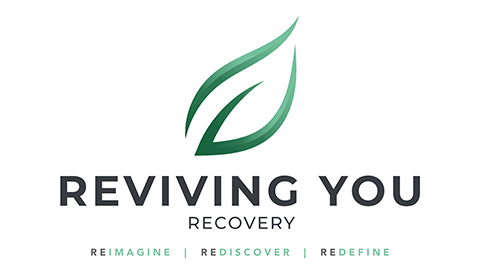The Unique Challenges Women Face When Seeking Help for Addiction

An estimated 48.7 million Americans struggle with a substance use disorder, meaning that almost 1 in 5 Americans has an addiction. For most, the only way out of that is to go into a substance abuse treatment program, most commonly known as rehab. And, for women, doing so means facing challenges with a system not designed to meet their needs. While, increasingly, rehab centers are offering addiction treatment designed around the needs of women many clinics still offer male-focused rehab which can pose a barrier to recovery.
Women have different backgrounds, different risks, different biology and biological reactions to substances, and different socialized behaviors. That means treatment, medication, and therapy all have to be tailored to the needs of the women seeking treatment. As a result, “women-focused” treatment for substance use disorders can significantly improve outcomes over general treatment.
Women are More Vulnerable to Violence
Women are significantly more vulnerable to trauma including domestic, sexual, and interpersonal relationship abuse. Substance abuse greatly increases these risks, with studies showing anywhere from 55-95% of all women in rehab centers have a history of trauma. 33-55% of all women have also experienced gendered violence, which increases when you specifically look at LGTBQA+ populations. Women have experienced significant violence and switching towards women-focused rehab treatment allows stepping away from triggers and creates opportunities for a safe and comfortable environment where recovery can happen. That’s especially true in facilities, where it’s not uncommon for women to experience gendered violence from both peers and facilitators.
Women are not often safe from gendered violence. Going into treatment does not change that. This means that women always face the risk that they are re-exposed to further trauma while trying to get help – which leads to increased likelihood of relapse and less likelihood of benefiting from treatment.
Women Often Live with Their Abusers
It’s extremely common that women use as part of a coping strategy to deal with domestic abuse. This often means that they live with their abusers and will return to that living situation after receiving therapy.
As a result, women should have opportunities to receive women-only treatment with family therapy, childcare, relationship therapy, and assistance finding homes, job placement, and domestic violence shelter on leaving treatment.
Because these concerns are rarely part of treatment for men seeking recovery, these initiatives are rare in “traditional” addiction treatment, although you increasingly also see it in treatment dedicated to homosexual men.
Get Your Questions Answered Now
Women Use for Different Reasons
Male-oriented treatment and therapy often focuses on men’s issues and men’s reasons to use substances. But, women use differently than men do. For example, women are more likely to use alone and in the privacy of their own home, as a way to let go, to destress, to cope with stress about motherhood and relationships, and to hide their health problems. The phenomenon is similar to how women choking are more likely to run to a bathroom to choke in private and are therefore more likely to die.
Men very often engage in substance use publicly, use in groups, and use as part of social gatherings. They associate substance abuse with groups and parties. Women need help recovering from using when they are alone, which includes drinking large quantities of alcohol the second they are alone, abusing prescription pills in private, and otherwise shifting coping mechanisms into something that is hidden and private. Treating this means using therapy to shift accountability and sharing stress and asking for support into the social domain, which is something that many women are taught not to do.

Childbirth and Childcare can Complicate Recovery
Men very rarely have to deal with issues including children, pregnancy, and childcare during recovery. For women, children are a primary barrier to getting help. For example, women who move into addiction treatment while pregnant face significant barriers in the form of emotional instability, hormones, depression, and negative moods. Women who are addicted to a substance are also significantly more likely to become pregnant without prior planning, which means that pregnancy can be more traumatic and harder to deal with. Therefore, pregnancies can also cause a significant amount of emotional trauma and distress not related to those hormones. Rehab centers treating people who are pregnant therefore have to make significant steps to offer meaningful treatment that accounts for the emotional and hormonal complexities of pregnancy.
Following childbirth, children remain a significant barrier to treatment. For example, childcare duties can provide a significant barrier to getting treatment. That’s especially true for women who are single parents who don’t easily have resources to leave children with the other parent like most fathers moving into treatment do. Childcare responsibilities are shown to be a significant reason for disruption of treatment, even in outpatient addiction treatment. While staying at home, parents simply do not have the energy to focus on childcare and recovery. And, children can prevent parents from taking needed breaks to seek out recovery. Today, more and more recovery centers are offering childcare as part of treatment. In 2022, just 6% of residential facilities reported having childcare facilities and offerings alongside rehab – but those offerings are increasingly available.
Finally, many women avoid treatment because they are afraid that being seen as a substance abuser could result in losing custody of their children. This barrier means that women who should be seeking out treatment are not and that when they do, they are more likely to hide it instead of asking for help from their community such as parents and friends.
Most Addiction Research is not Women-Focused
While 45% of all persons with a substance use disorder are women, only about 8% of addiction research is female-focused. Instead, over half of all addiction research is male-focused, with primarily male study groups and male-dominated participants. Yet, women are more vulnerable to substance use disorders than men. This also means that most treatment approaches do not specifically consider the social or biological needs of women in recovery. There are significant overlaps in how women should receive treatment. However, women are more likely to respond differently to medication, more likely to respond differently to therapy, and more likely to face different issues before and after treatment.
For example, women are more likely to be the sole caretaker of a child when they leave rehab, which means they are more likely to have to deal with stress and to be in positions of being forced into responsibility. Traditional interventions for men ask that they don’t take on more responsibility than for a plant in the first year. That’s not possible for a mother.
Women are also more likely to face significant stigma for having substance abuse problems. For example, women are more likely to be treated as though they are sexually promiscuous, not meeting expectations or responsibilities, or of lower character when people know they have had problems with substance abuse. This increases pressure on women to hide problems and therefore reduces the amount of support they can receive from their community.
Eventually, men and women have very different challenges and risks when seeking mental health and addiction treatment help. Women have more responsibilities in the home, greater risk of trauma and violence, are more prone to mental health problems, and are more likely to respond to treatment and medication in ways not predicted by studies and trials. All of this necessitates that women are giving personalized treatment with programs designed to tackle those issues, to account for ongoing stress after treatment, and to ensure dual diagnosis and treatment is available. Ensuring that interventions are in place, that aftercare and ongoing therapy to prevent relapse are present, and that women are provided safe spaces in case of trauma and gendered violence are call critical to ensuring that women benefit from addiction treatment.
We Accept Most Insurances
We are in network with:









We know insurance coverage can be a source of uncertainty for people. We make sure you have all the information necessary. The great news is health insurance can potentially cover the total treatment costs. If you don't have insurance, we offer cash payment options for our treatment programs and are committed to working with clients regardless of financial situations.
